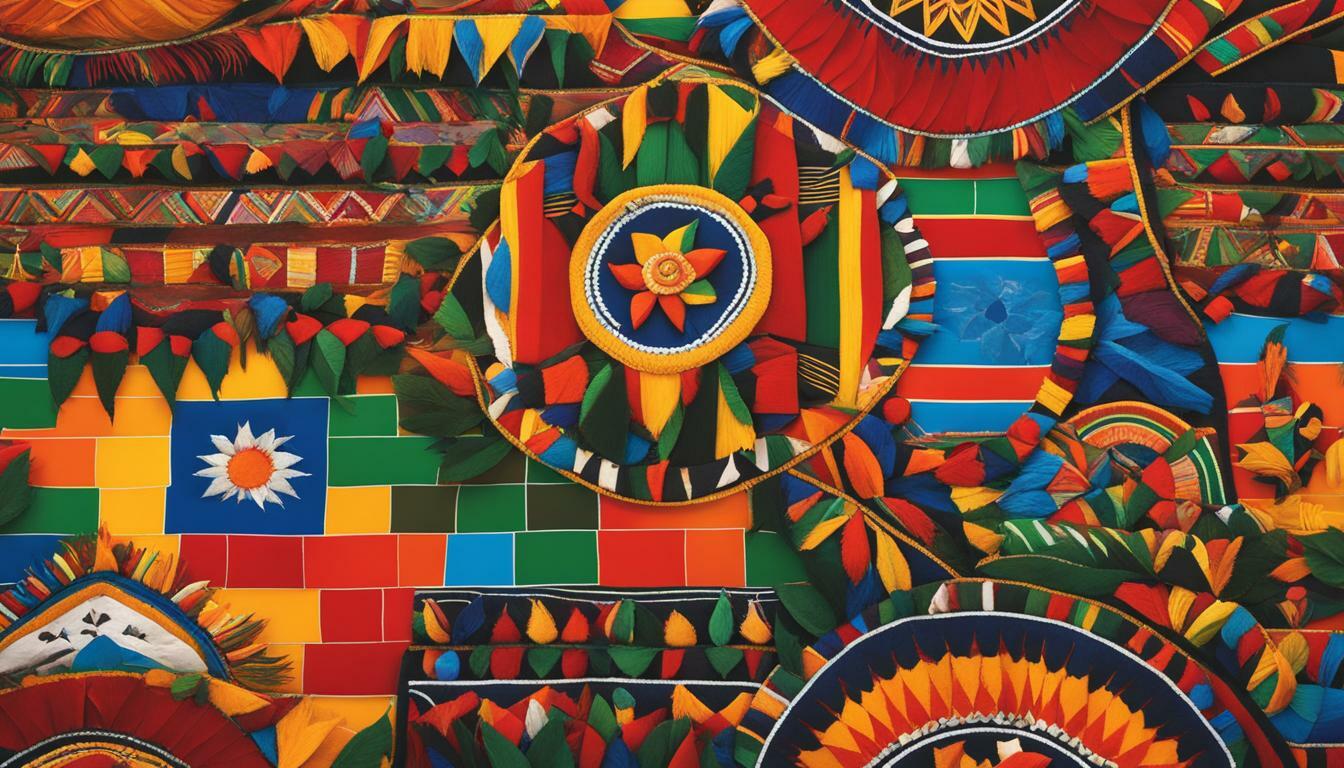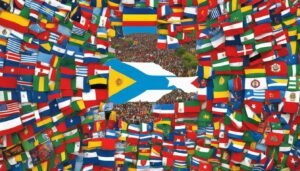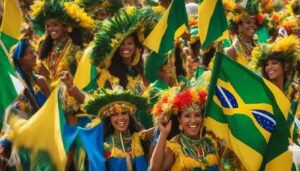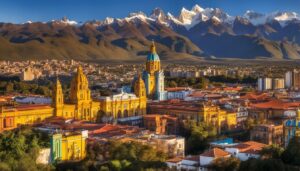What Language Do They Speak in Bolivia
Bolivia is a country known for its linguistic diversity, but what language do they actually speak there? The official language of Bolivia is Spanish, which is widely spoken throughout the country. However, Bolivia’s constitution also recognizes 36 indigenous languages, such as Aymara, Quechua, Chiquitano, and Guarani.
Key Takeaways:
- Spanish is the official language of Bolivia.
- Bolivia’s constitution recognizes 36 indigenous languages.
- Indigenous languages spoken in Bolivia include Aymara, Quechua, Chiquitano, and Guarani.
- Spanish is predominantly spoken in the Andes region, while Aymara is spoken in the Altiplano around Lake Titicaca.
- Chiquitano is spoken in the central part of Santa Cruz, and Guarani is spoken in the southeast on the border with Paraguay.
- Efforts have been made to preserve and protect indigenous languages in Bolivia, including bilingual education programs and language centers.
Official Language of Bolivia
The official language of Bolivia is Spanish, which is widely spoken and used in various aspects of daily life. Spanish was introduced to Bolivia during the colonial period and has since become the dominant language in the country. It is the primary language of communication, education, government, and business.
However, it is important to note that Bolivia is also home to a diverse range of indigenous languages. According to the country’s constitution, there are 36 indigenous languages recognized in Bolivia. Some of the most widely spoken indigenous languages include Aymara, Quechua, Chiquitano, and Guarani, among others.
In different regions of Bolivia, you will find variations in language usage. In the Andes region, Spanish is predominantly spoken. In the Altiplano around Lake Titicaca, the Aymara language is prevalent. In the central part of Santa Cruz, Chiquitano is spoken. And in the southeast on the border with Paraguay, Guarani is the dominant language.
Under the leadership of President Evo Morales, Bolivia has made efforts to preserve and protect its indigenous languages. Bilingual education programs have been implemented to promote the use of indigenous languages alongside Spanish. Language centers have also been established to provide resources and support for the learning and preservation of these languages.
| Language | Region |
|---|---|
| Spanish | Nationwide |
| Aymara | Altiplano (Lake Titicaca) |
| Quechua | Various regions |
| Chiquitano | Santa Cruz |
| Guarani | Southeast (border with Paraguay) |
The linguistic diversity of Bolivia reflects its rich cultural heritage. Language plays a significant role in shaping the country’s traditions, practices, and identity. It is a testament to the country’s commitment to inclusivity and cultural preservation that Bolivia recognizes and celebrates its indigenous languages alongside Spanish.
Indigenous languages in Bolivia
In addition to Spanish, Bolivia is home to a wide range of indigenous languages that reflect the country’s multicultural heritage. The constitution of Bolivia recognizes 36 indigenous languages, making it one of the most linguistically diverse countries in the world. Among these languages, Aymara and Quechua are the most widely spoken, with Chiquitano and Guarani also playing significant roles in different regions of the country.
Aymara, spoken in the Altiplano region around Lake Titicaca, holds great cultural importance for the indigenous communities residing there. Meanwhile, Quechua, which has its roots in the Inca Empire, is spoken by various indigenous groups in Bolivia. These languages have survived centuries and continue to be an integral part of the cultural fabric of Bolivia.
The diversity of indigenous languages in Bolivia is not restricted to Aymara and Quechua alone. The Chiquitano language, spoken in the central region of Santa Cruz, and Guarani, spoken in the southeast bordering Paraguay, are just a few examples of the linguistic richness found in different parts of the country. Each language carries its own unique history, traditions, and expressions, contributing to the rich tapestry of Bolivian culture.
| Language | Region |
|---|---|
| Aymara | Altiplano (Lake Titicaca region) |
| Quechua | Throughout the country |
| Chiquitano | Santa Cruz |
| Guarani | Southeast (bordering Paraguay) |
Recognizing the importance of preserving the indigenous languages, Bolivia has implemented various initiatives under President Evo Morales. Bilingual education programs have been established to promote the use of native languages alongside Spanish in schools, allowing indigenous children to maintain their cultural heritage while acquiring essential linguistic skills. Language centers have also been set up to support the documentation, research, and revitalization of indigenous languages, ensuring their continued existence for future generations.
Regional Variations in Language
While Spanish is the dominant language in Bolivia, there are regional variations that see other languages taking prominence in specific areas. Bolivia is a linguistically diverse country, with 36 indigenous languages recognized in its constitution. Let’s explore some of the regional variations in language that exist within Bolivia.
In the Andes region, Spanish is the most widely spoken language. This region is home to the country’s capital, La Paz, and other major cities like Sucre and Cochabamba. Spanish is the primary language of communication, education, and administration in these urban centers.
However, as we move to the Altiplano region around Lake Titicaca, the Aymara language begins to take prominence. Aymara is an indigenous language spoken by the Aymara people, who have a strong presence in this region. It is not uncommon to hear Aymara being spoken in daily conversations, markets, and cultural events in this area.
In the central part of Santa Cruz, the Chiquitano language is prevalent. The Chiquitano people, an indigenous group, primarily speak this language. They have managed to maintain their linguistic heritage and use Chiquitano as a means of communication within their communities.
Lastly, in the southeast region of Bolivia, along the border with Paraguay, the Guarani language thrives. This region has a significant population of Guarani-speaking indigenous communities. Guarani is recognized as an official language in some municipalities in this area, highlighting its importance and the cultural significance of language diversity in Bolivia.
Language Distribution in Bolivia’s Regions
| Region | Dominant Language |
|---|---|
| Andes | Spanish |
| Altiplano | Aymara |
| Santa Cruz | Chiquitano |
| Southeast | Guarani |
These regional variations in language reflect the rich cultural diversity of Bolivia. The country’s commitment to preserving and protecting indigenous languages can be seen through the implementation of bilingual education programs and the establishment of language centers. By recognizing and celebrating its linguistic heritage, Bolivia embraces its multicultural identity.
Efforts to Preserve Indigenous Languages
Recognizing the importance of preserving indigenous languages, Bolivia has taken significant steps to ensure their survival and promote bilingualism. Bilingual education programs have been implemented to provide native speakers with the opportunity to learn their traditional languages alongside Spanish. These programs not only help to preserve indigenous languages but also foster a sense of cultural pride and identity among indigenous communities.
In addition to bilingual education programs, Bolivia has established language centers throughout the country. These centers serve as vital resources for language preservation, offering classes, workshops, and resources for individuals interested in learning or teaching indigenous languages. They play a crucial role in creating a supportive environment for language revitalization and ensuring that future generations have access to their ancestral languages.
The efforts to preserve indigenous languages in Bolivia have been especially significant under the presidency of Evo Morales, the country’s first indigenous president. Morales has championed the rights of indigenous communities and made it a priority to promote indigenous languages and cultures. His administration’s commitment to language preservation has provided indigenous populations with a platform to celebrate their linguistic heritage and strengthen their cultural identity.
Example Language Center Programs:
- Language immersion courses for adults
- Teacher training programs for indigenous language instruction
- Community-based language revitalization projects
- Support for the creation of language learning materials and resources
The preservation of indigenous languages is not only crucial for cultural diversity but also for the overall well-being of indigenous communities. Language plays a vital role in maintaining cultural practices, transmitting traditional knowledge, and fostering a sense of belonging. By actively promoting bilingualism and investing in language preservation initiatives, Bolivia is taking a proactive stance in safeguarding its linguistic heritage for generations to come.
| Indigenous Languages | Regions Spoken |
|---|---|
| Aymara | Altiplano (Lake Titicaca region) |
| Quechua | Various regions |
| Chiquitano | Central part of Santa Cruz |
| Guarani | Southeast (border with Paraguay) |
| And many more… | Throughout Bolivia |
Cultural Significance of Language
Language in Bolivia is not just a means of communication, but also an integral part of the country’s cultural identity and heritage. With its rich cultural and linguistic diversity, Bolivia stands as a testament to the importance of language in shaping and preserving traditions.
The cultural diversity in Bolivia is reflected in the linguistic diversity found across the country. In addition to Spanish, the official language, Bolivia recognizes 36 indigenous languages in its constitution. These languages, such as Aymara, Quechua, Chiquitano, and Guarani, contribute to the vibrant tapestry of Bolivian culture.
Beyond their practical use, these indigenous languages serve as valuable connections to ancestral knowledge and traditions. They carry the stories, customs, and beliefs of indigenous communities, providing a window into their rich cultural heritage. The use of these languages is not just a way to communicate, but also a celebration of Bolivia’s diverse cultural legacy.
| Language | Region |
|---|---|
| Spanish | Andes region |
| Aymara | Altiplano |
| Chiquitano | Santa Cruz |
| Guarani | Southeast Bolivia (bordering Paraguay) |
The cultural significance of language in Bolivia extends beyond the spoken word. It is through language that traditional rituals, ceremonies, and artistic expressions are passed down from one generation to the next. From the poetic verses of Quechua songs to the intricate storytelling of Aymara folklore, language plays a vital role in preserving and perpetuating Bolivia’s cultural heritage.
Linguistic Diversity Everywhere
The linguistic diversity of Bolivia is truly everywhere – in the bustling markets of La Paz, the rural communities of the Altiplano, and the vibrant city of Santa Cruz. It is an essential part of daily life, shaping not only how Bolivians communicate but also how they view the world and their place within it.
In conclusion, language in Bolivia goes beyond mere words. It is a reflection of the country’s cultural diversity, connecting past and present, and shaping its vibrant traditions. By recognizing and preserving indigenous languages, Bolivia embraces the richness of its heritage and ensures that future generations can continue to celebrate and appreciate this linguistic tapestry.
Conclusion
In conclusion, Bolivia is a country with a rich linguistic tapestry, where Spanish serves as the official language alongside a multitude of indigenous languages, reflecting the country’s cultural diversity and heritage. While Spanish is the dominant language spoken in Bolivia, there are also 36 indigenous languages recognized in the country’s constitution. These include Aymara, Quechua, Chiquitano, and Guarani, among others.
The distribution of languages varies across different regions of Bolivia. Spanish is primarily spoken in the Andes region, while Aymara is spoken in the Altiplano around Lake Titicaca. Chiquitano is the prevalent language in the central part of Santa Cruz, and Guarani is spoken in the southeast on the border with Paraguay.
Bolivia has made significant efforts to preserve and protect its indigenous languages. Bilingual education programs have been implemented to promote the use and teaching of indigenous languages, and language centers have been established to support language revitalization and cultural preservation. These initiatives were established under the presidency of Evo Morales, recognizing the importance of linguistic diversity in maintaining Bolivia’s cultural heritage.
The cultural significance of language in Bolivia cannot be overstated. It is intertwined with the country’s diverse cultural practices and traditions, representing the identities and histories of indigenous communities. The linguistic diversity found in Bolivia contributes to the vibrant tapestry of the nation, showcasing the richness of its cultural heritage.
FAQ
What language do they speak in Bolivia?
The official language of Bolivia is Spanish, but there are also 36 indigenous languages recognized in the country’s constitution.
What are some of the indigenous languages spoken in Bolivia?
Some of the indigenous languages spoken in Bolivia include Aymara, Quechua, Chiquitano, and Guarani, among others.
Where is Spanish primarily spoken in Bolivia?
Spanish is primarily spoken in the Andes region of Bolivia.
Where is Aymara spoken in Bolivia?
Aymara is spoken in the Altiplano region around Lake Titicaca.
Where is Chiquitano spoken in Bolivia?
Chiquitano is spoken in the central part of Santa Cruz.
Where is Guarani spoken in Bolivia?
Guarani is spoken in the southeast region of Bolivia, on the border with Paraguay.
What efforts have been made to preserve indigenous languages in Bolivia?
Under President Evo Morales, Bolivia has implemented bilingual education programs and established language centers to help preserve and protect indigenous languages.
What is the cultural significance of language in Bolivia?
Language plays a crucial role in Bolivia’s diverse cultural practices and traditions, reflecting the country’s rich cultural heritage.
Source Links
- https://en.wikipedia.org/wiki/Languages_of_Bolivia
- https://info.handicraft-bolivia.com/Languages-spoken-in-Bolivia-a193
- https://www.universal-translation-services.com/official-languages-of-bolivia/amp/



